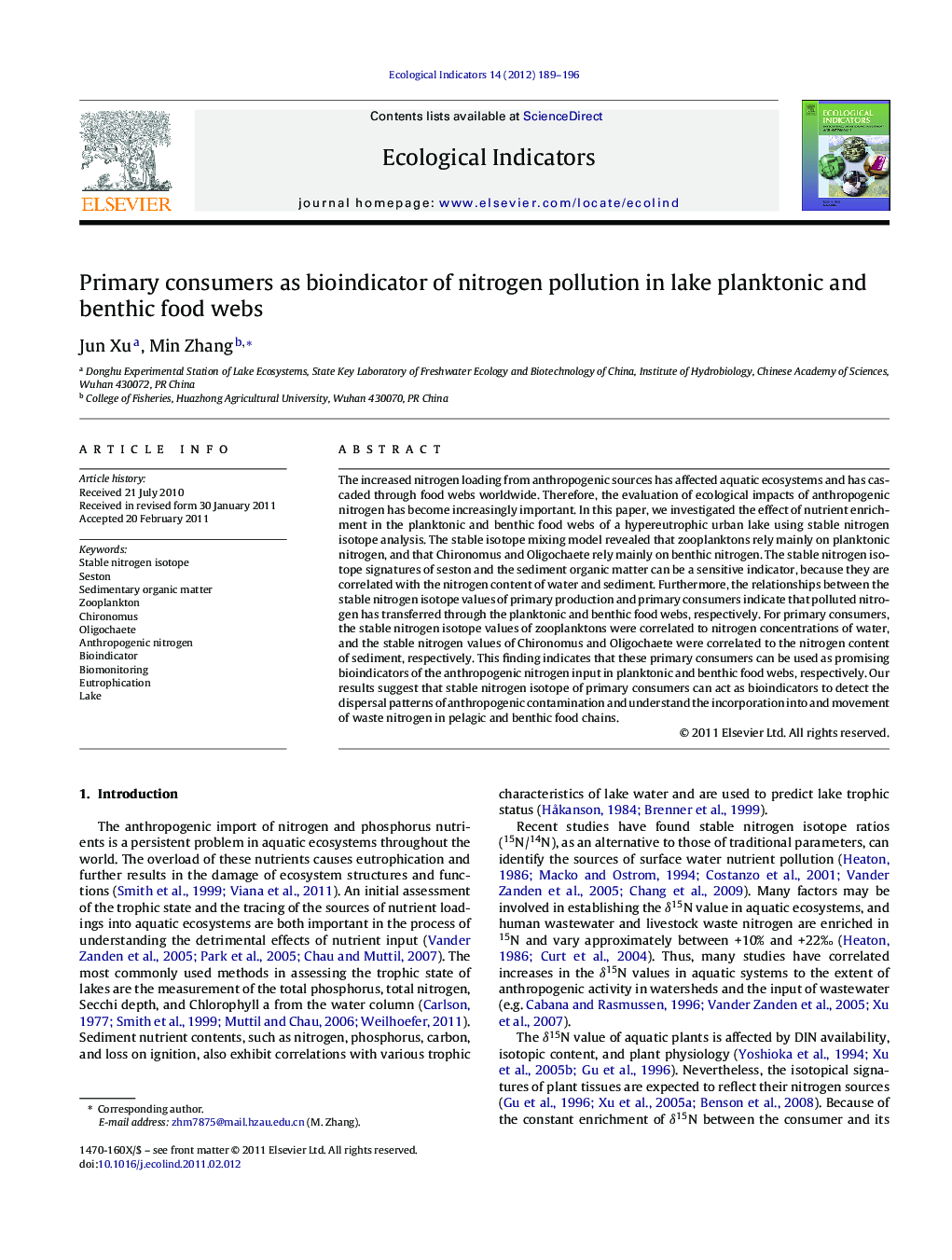| Article ID | Journal | Published Year | Pages | File Type |
|---|---|---|---|---|
| 4373898 | Ecological Indicators | 2012 | 8 Pages |
The increased nitrogen loading from anthropogenic sources has affected aquatic ecosystems and has cascaded through food webs worldwide. Therefore, the evaluation of ecological impacts of anthropogenic nitrogen has become increasingly important. In this paper, we investigated the effect of nutrient enrichment in the planktonic and benthic food webs of a hypereutrophic urban lake using stable nitrogen isotope analysis. The stable isotope mixing model revealed that zooplanktons rely mainly on planktonic nitrogen, and that Chironomus and Oligochaete rely mainly on benthic nitrogen. The stable nitrogen isotope signatures of seston and the sediment organic matter can be a sensitive indicator, because they are correlated with the nitrogen content of water and sediment. Furthermore, the relationships between the stable nitrogen isotope values of primary production and primary consumers indicate that polluted nitrogen has transferred through the planktonic and benthic food webs, respectively. For primary consumers, the stable nitrogen isotope values of zooplanktons were correlated to nitrogen concentrations of water, and the stable nitrogen values of Chironomus and Oligochaete were correlated to the nitrogen content of sediment, respectively. This finding indicates that these primary consumers can be used as promising bioindicators of the anthropogenic nitrogen input in planktonic and benthic food webs, respectively. Our results suggest that stable nitrogen isotope of primary consumers can act as bioindicators to detect the dispersal patterns of anthropogenic contamination and understand the incorporation into and movement of waste nitrogen in pelagic and benthic food chains.
